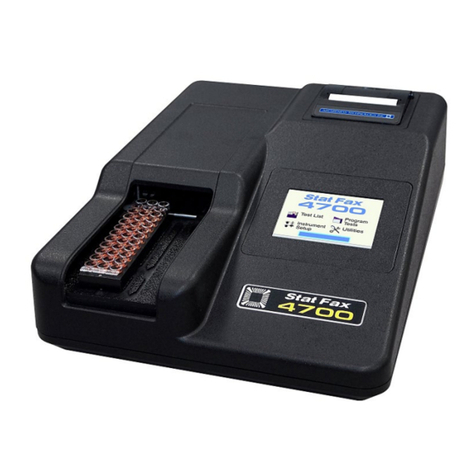
TABLE OF CONTENTS
1. Introduction ...................................................................................................... 1
1.1 Applications.............................................................................................................................. 1
1.1.1 Intended Use ..................................................................................................................... 1
1.1.2 Summary of the Instrument ............................................................................................... 1
1.1.3 Principles of Operation ...................................................................................................... 2
1.2 Warning Markings Inscriptions d’avertissement ...................................................................... 3
1.2.1 Safety Symbols Le Symboles de Sûreté........................................................................... 3
1.2.2 Safety Terms Terminologie de Sûreté .............................................................................. 3
1.3 Safety Precautions ................................................................................................................... 4
1.3.1 Disposal............................................................................................................................. 5
1.4 Specifications ........................................................................................................................... 6
1.5 Installation ................................................................................................................................ 8
1.5.1 General.............................................................................................................................. 8
1.5.2 Installation/Preparation...................................................................................................... 8
1.5.3 Load Paper ........................................................................................................................ 9
1.5.4 Touch Screen Description ............................................................................................... 10
1.6 Parts and Controls ................................................................................................................. 10
1.7 Checkout Procedure .............................................................................................................. 11
2. Operating Procedures ................................................................................... 12
2.1 Operating Precautions ........................................................................................................... 12
2.2 General Selections................................................................................................................. 12
2.3 Main Display Menu Options ................................................................................................... 13
2.3.1 Run Test.......................................................................................................................... 14
2.3.2 Settings ........................................................................................................................... 15
2.3.2.1 External Output....................................................................................................... 16
2.3.2.2 USB Mouse Connection ......................................................................................... 16
2.3.3 Manage Tests.................................................................................................................. 17
2.3.3.1 Multi-Test................................................................................................................ 18
2.3.4 Utilities ............................................................................................................................. 20
2.4 General Operation ................................................................................................................. 22
2.4.1 Bichromatic Differential Operation .................................................................................. 22
2.4.2 Loading and Formatting a Plate ...................................................................................... 22
2.4.2.1 Locating Controls.................................................................................................... 23
2.4.3 Reading a Plate............................................................................................................... 25
2.4.4 Unit of Measurement Codes (Unit Code) ........................................................................ 26
2.4.5 Offset Absorbance........................................................................................................... 27
2.4.6 Lamp Saver and Lamp Warmup ..................................................................................... 27
2.5 Modes of Operation ............................................................................................................... 28
2.5.1 Absorbance Mode ........................................................................................................... 30
2.5.1.1 Filter Selection........................................................................................................ 30
2.5.1.2 Blank....................................................................................................................... 31
2.5.2 Factor Mode .................................................................................................................... 31
2.5.3 Single Standard Mode..................................................................................................... 34
2.5.4 Multi-Point Modes (Point to Point, Regression and Cubic Spline) .................................. 36
2.5.4.1 - % Absorbance ...................................................................................................... 38
2.5.4.2 – Editing a Curve .................................................................................................... 39
2.5.4.3 – Select Axes.......................................................................................................... 40
2.5.4.4 – Controls ............................................................................................................... 42
2.5.5 Cut Off Mode ................................................................................................................... 43






























